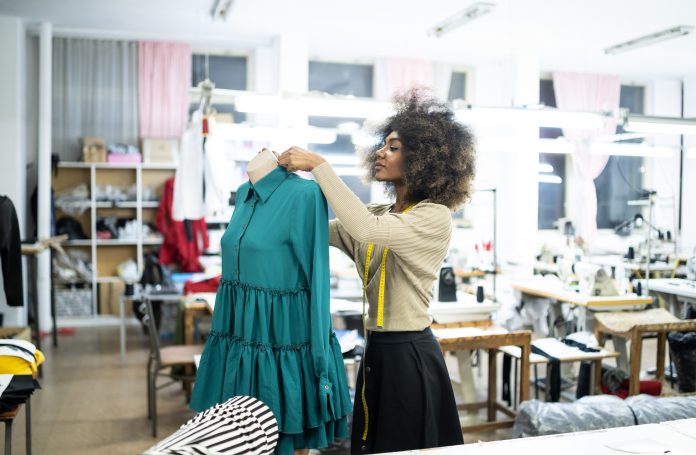Chloe Skidmore, Technical Assistant at intellectual property law firm Reddie & Grose, shares her expertise on decarbonising the textiles industry and creating sustainable fashion
A linear ‘take-make-dispose’ manufacturing model currently ensures that the fashion industry accounts for 10% of global carbon emissions. Current production processes exacerbate critical issues surrounding stretched natural resources and environmental degradation. Shared accountability should be considered across sectors if carbon neutrality is to be realised; we must celebrate and reward those in the fashion industry working to shape a more sustainable future.
While there is growing interest in sustainable fashion, the rising demand for affordable and stylish clothing continues to favour more cost-effective production methods over competing environmental concerns.
A report from Stand Earth featured in British Vogue reiterates the existing impact of extracting virgin materials from non-renewable resources in production. (1) Out of 14 major brands identified within the sample, only four are on track to reduce greenhouse emissions sufficiently to stay below the 1.5C climate change threshold. Even as brands begin to recognise the importance of the sustainability of their processes, it appears unlikely that the industry will meet its climate targets for 2024.
The concept of fast fashion
The concept of fast fashion promotes instantaneous mass production as organisations rush to meet the ever-increasing demands of a consumer-driven society. This is a critical factor in the industry’s contribution to water pollution and greenhouse gas emissions.
Dictated by the rise of fast fashion, textile production doubled over the first fifteen years of the new millennium, and consumption of clothing and footwear is now expected to double again by the end of the decade. Repeated overproduction of products using outdated manufacturing techniques hampers environmental progress and depletes resources throughout the production and processing stage.
For example, routine use of synthetic dyes in production results in chemical discharge that is toxic to aquatic life and likely to cause disruption of ecosystems. Some dyes, such as carbon black, even pose a threat to human health.
With textile production globally responsible for around 20% of clean water pollution and the industry generating more greenhouse gas emissions than air travel, the linear mindset introduced by fast fashion must pivot for the good of textile workers and the environment who pay a high price to maintain low costs for the consumer.
Towards sustainability in the fashion industry
As the fashion industry strives to become more sustainable, new innovations in the space are catalysing positive change. Many brands embrace the Ellen MacArthur Foundation’s (EMF) definition of a circular economy and focus on the three key principles of eliminating waste and pollution, circulating products and materials at their highest value and regenerating nature. (2)
A key way to meet these goals is substituting energy-intensive fast-fashion favourites such as polyester and nylon derived from fossil fuels for biodegradable alternatives or recycled materials. The ‘circular fashion’ lifecycle begins at the design phase, where ideas for clothes are conceived with longevity in mind.
By recycling and re-using clothes, using lower-CO2-impact materials, or creating new materials themselves and fundamentally changing the material streams used to produce clothing, brands can kickstart a universal shift to sustainability.
The role of intellectual property in fashion
As the shift to sustainable fashion unfolds, the magnitude of IP considerations surrounding sustainable innovation grows in line with industry breakthroughs. The role of intellectual property in driving innovation and economic progress in fashion should not be overlooked.
To enable designers and brands to commit to greener, more ethical practices whilst maintaining the economic viability of their manufacturing processes, suitable
protection of innovations in the field is crucial as developments evolve.
From eco-friendly dyes and pigments offering a natural alternative to synthetic colouring, to using AI technology to identify, create and recycle materials as part of a circular economy, relevant patents and trademarks must be in place to facilitate a turning point for textiles.











